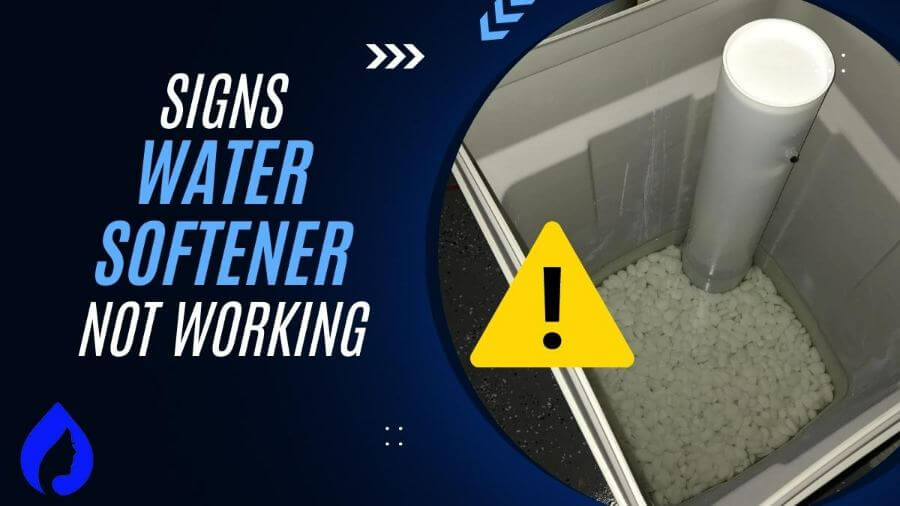
Is your water softener not working? Here are some common signs to check for a faulty water softener:
But don’t worry – these problems often have simple solutions like:
In this updated guide, we’ll dive into these symptoms in more detail and provide comprehensive troubleshooting to help you get your malfunctioning water softener fixed.
- 🤔 How Do You Know If Your Water Softener Is Not Working?
- 💧#1: You’re Getting Hard Water
- 🧂#2: Water Softener Not Using Salt at All/ Consuming Excessive Salt
- 🍶#3: Brine Tank Full of Water/Not Enough Water
- 🪱#4: Floating Particles in the Resin Tank
- 🔰#5: Discolored Water
- ⬇️#6: Water Pressure Is Low
- 🔊#7: Softener Making Excessive Noise/Too Quiet
- 🚿#8: Softener Is Leaking
- 🤢#9: Water Tastes Salty/Weird
- ⚒️How to Get Your Water Softener Working?
- ❓Signs Water Softener Not Working: FAQs
🤔 How Do You Know If Your Water Softener Is Not Working?
| Signs | Adjust settings, Add salt, Break the salt bridge, Check if the softener is plugged in, and power on. | Solution |
| You’re getting hard water | Wrong hardness setting, Brine tank empty, Salt mushing, Power not on. | Adjust settings, Add salt, Break the salt bridge, Check if the softener is plugged in, and power it on. |
| Consuming excessive salt/not using salt at all | Incorrect settings, Resin bed issue | Adjust settings, Clean/replace the resin bed |
| Brine Tank Full Of Water/not enough water | Malfunctioning float, Incorrect water level setting | Repair/replace float, Adjust water level |
| Floating particles in the resin tank | Broken resin beads | Replace resin beads |
| Discolored water | Iron or manganese in water | Use iron filter |
| Water Pressure Is Low | Clogged resin bed, sediment filter | Regenerate resin bed, Clean/replace filter |
| Softener making excessive noise/too quiet | Mechanical issues, Power not on | Check for broken parts; ensure power is on |
| Softener Is Leaking | Loose connections, Worn out seals | Tighten connections, Replace seals |
| Water Tastes Salty/Weird | Improper regeneration, Excessive salt in the brine tank | Adjust the regeneration cycles, Reduce the salt level |
💧#1: You’re Getting Hard Water
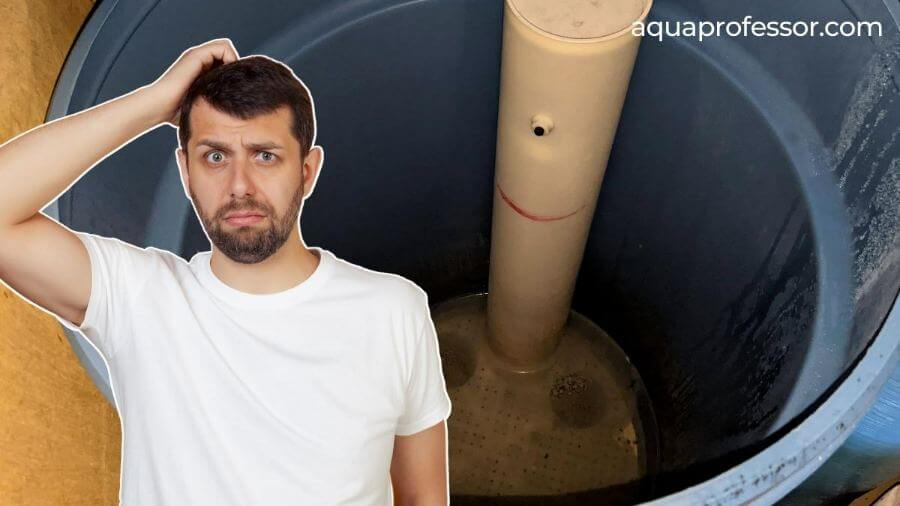
It means you’ll experience hard water problems again, such as soaps not lathering properly, white spots on dishes, a white film on fixtures due to mineral deposits, and a bitter taste in the water.
Probable Reasons:
How to Fix:
🧂#2: Water Softener Not Using Salt at All/ Consuming Excessive Salt
When your water softener uses an unusual amount of salt or not at all, it could indicate a problem. It could make the water taste salty.
Probable Reasons:
How to Fix:
🍶#3: Brine Tank Full of Water/Not Enough Water
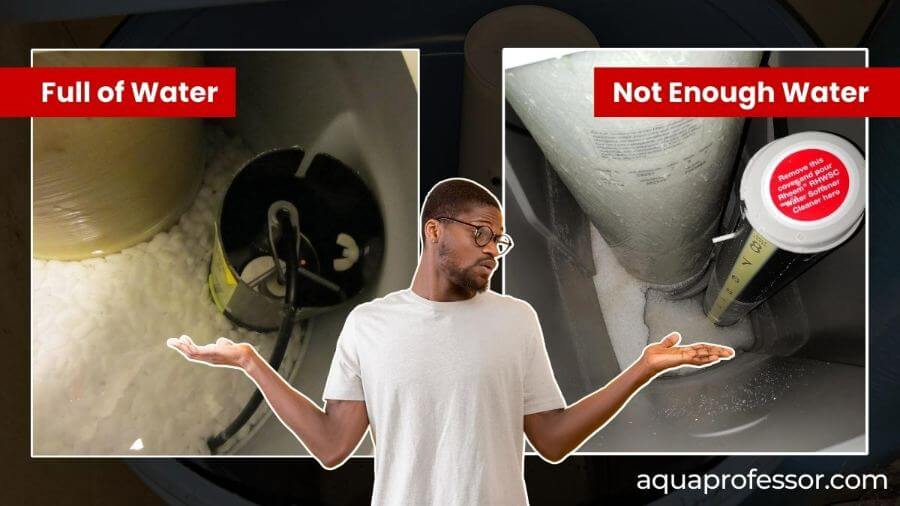
If your brine tank has too much or too little water, it can prevent the system from softening your water effectively.
Probable Reasons:
How to Fix:
🪱#4: Floating Particles in the Resin Tank
Floating particles in your resin tank can indicate broken resin beads, affecting the water-softening system.
Probable Reasons:
How to Fix:
Also Read: Is Water Softener Resin Bad For Health?
🔰#5: Discolored Water
If your water is discolored (brown, orange, or grey), it could mean your water softener system isn’t working properly.
Probable Reasons:
How to Fix:
Also Read: How To Fix Brown Sludge In Water Softener Tank
⬇️#6: Water Pressure Is Low
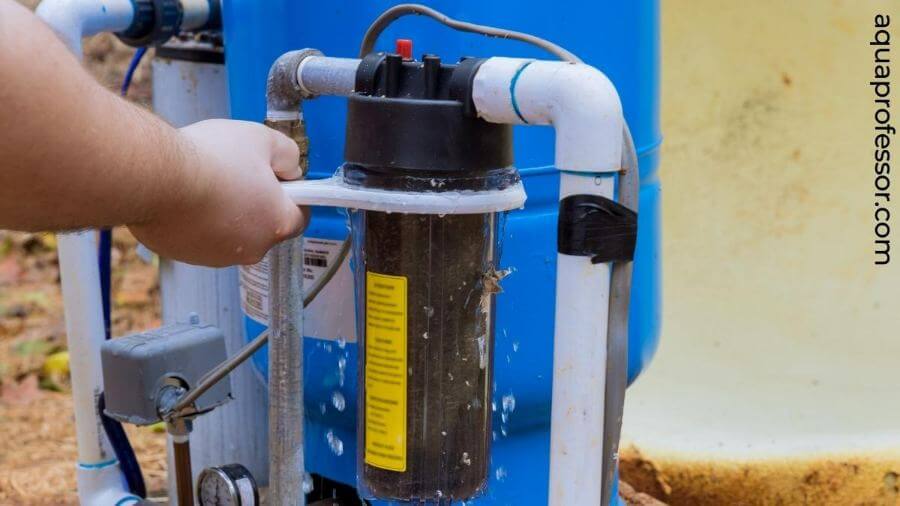
A decrease in water pressure might indicate a clogged resin bed or sediment filter.
Probable Reasons:
How to Fix:
🔊#7: Softener Making Excessive Noise/Too Quiet
If your water softener makes more noise than usual or has become unusually quiet, it could indicate mechanical or power problems.
💡Note: If you hear flushing sounds during the regeneration cycles, those are completely normal.
Probable Reasons:
How to Fix:
🚿#8: Softener Is Leaking
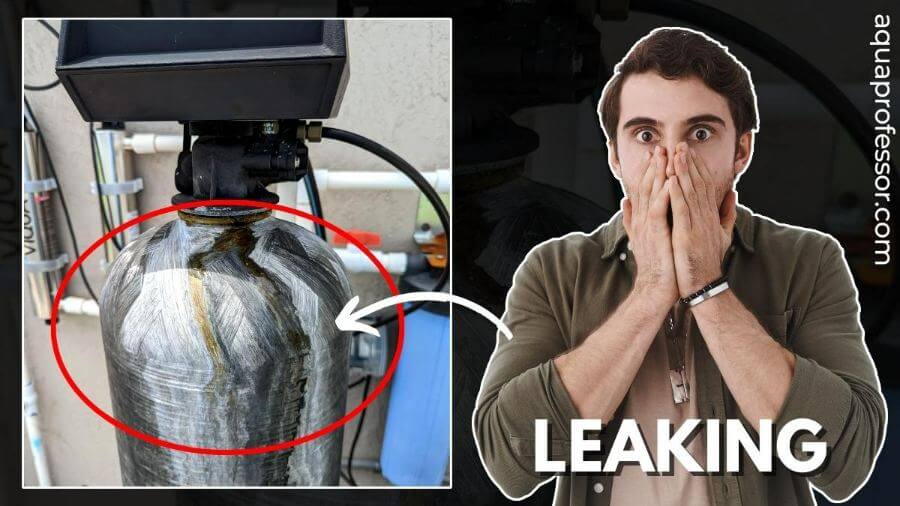
A leaking water softener can waste water and salt, potentially damaging your property. The worn-out parts in your softener or incorrect installation can cause stagnant water to collect in your house.
Probable Reasons:
How to Fix:
You must call a service technician in case of a major leak.
Also Read: Why My Water Softener Is Constantly Draining
🤢#9: Water Tastes Salty/Weird
If your water tastes salty or weird, it could mean an issue with the regeneration process or the brine concentration.
Probable Reasons:
How to Fix:
⚒️How to Get Your Water Softener Working?
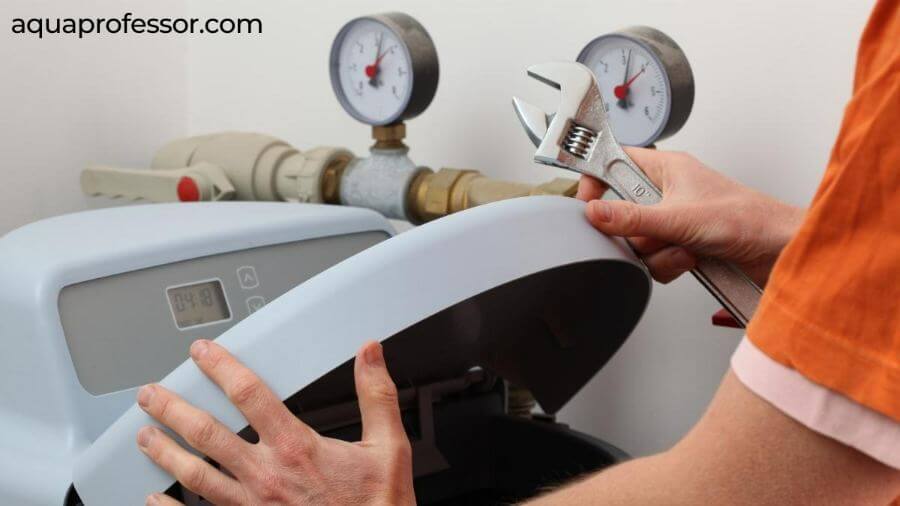
Here’s how to get a properly working water softener:
To ensure your softener lasts longer by performing water softener maintenance, you must consider these tips:
❓Signs Water Softener Not Working: FAQs
What happens when the water softener fails?
When a water softener isn’t working, it stops softening water. It means you’ll start to notice hard water symptoms such as:
1. Soap not lathering well,
2. Spots on dishes, and
3. Scale buildup on appliances.
How do I know if my water softener resin is bad?
Signs of bad water softener resin include:
1. A decrease in the water softener’s effectiveness.
2. Changes in water pressure.
3. Finding resin beads leakage in your water (Watch our video Bad Resin Issues)
How to tell if the water softener is regenerating?
You can tell if your water softener is regenerating by checking its control panel for a regeneration cycle indicator. Additionally, you might hear water flowing into the drain line during the process. If these signs aren’t present during a scheduled regeneration cycle, it could indicate a problem with your water softener.
Why is water softener not regenerating automatically?
If your water softener isn’t regenerating automatically, it could be due to incorrect settings, a malfunctioning timer, or a mechanical issue with the system. Check these components and adjust or repair them as necessary.
What are common problems with water softeners?
Common problems with faulty water softeners include:
1. Salt bridge or mushing in the brine tank – Break up the salt bridges, remove the mushy salt, and clean the tank.
2. Resin bed issues – Flush the system with a resin cleaner to restore the bed’s capacity.
3. Mechanical failures – Consult a service technician to inspect and repair any mechanical issues.
4. Incorrect settings – Check and adjust the settings according to your water hardness and usage.
Sayan understands that access to clean water doesn’t have to be costly.
He strives to provide knowledge of water purification techniques in the simplest way possible so that we can lead a healthy life without breaking our bank.
